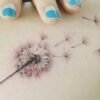Maintaining an Ideal Weight for Hairless Cats: A Comprehensive Guide
Hairless cat breeds, including the Sphynx and Peterbald, require special attention when it comes to weight management. Maintaining an ideal weight is crucial for their overall health and well-being. In this comprehensive guide, we’ll explore effective strategies to help your hairless cat achieve and sustain an optimal weight.

1. Consult with a Veterinarian:
Initiate your weight management journey by consulting with a veterinarian who is familiar with the unique needs of hairless cats. They can provide insights into your cat’s health, assess their ideal weight, and recommend a tailored diet and exercise plan.
2. Choose a High-Quality, Balanced Diet:
Selecting the right cat food is foundational to weight management. Opt for high-quality, balanced cat food designed to meet the specific nutritional needs of hairless breeds. Consult with your veterinarian to determine the appropriate portion sizes based on your cat’s age, weight, and activity level.
3. Portion Control:
Implementing portion control is essential to prevent overfeeding. Measure your cat’s meals carefully, and avoid free-feeding to ensure they receive the correct amount of calories. Adjust portions based on their activity level and any changes in weight.
4. Monitor Treats and Snacks:
Be mindful of treats and snacks, as they can contribute significantly to calorie intake. Opt for healthy, low-calorie treats and limit their consumption. Consider incorporating small portions of your cat’s regular food as treats.
5. Regular Exercise and Play:
Encourage regular exercise to keep your hairless cat active and fit. Engage them in interactive play sessions using toys like feather wands or laser pointers. Provide climbing structures, tunnels, and other stimulating toys to keep them physically and mentally engaged.
6. Wet and Dry Food Combination:
Consider a combination of wet and dry food in your cat’s diet. Wet food can contribute to hydration, essential for skin health, while dry food provides additional texture and helps maintain dental health. Ensure both options are nutritionally balanced.
7. Environmental Enrichment:
Create an enriched environment with various toys, scratching posts, and interactive play areas. Hairless cats enjoy mental stimulation, and a well-enriched environment can prevent boredom and encourage physical activity.
8. Regular Veterinary Check-ups:
Schedule regular check-ups with your veterinarian to monitor your cat’s weight and overall health. Regular assessments allow for early detection of any potential weight-related issues, enabling timely intervention.
9. Hydration:
Hairless cats may have specific needs regarding hydration. Ensure they have access to fresh water at all times. If necessary, consider wetting their food to increase water intake.
10. Consistency is Key:
Consistency is crucial in weight management. Stick to a routine, provide a balanced diet, and maintain regular exercise to help your hairless cat achieve and sustain their ideal weight.
By following these strategies and maintaining open communication with your veterinarian, you can contribute significantly to the overall health and happiness of your hairless cat. Remember that individual needs may vary, so personalized attention and care are essential in achieving long-term weight management success.

